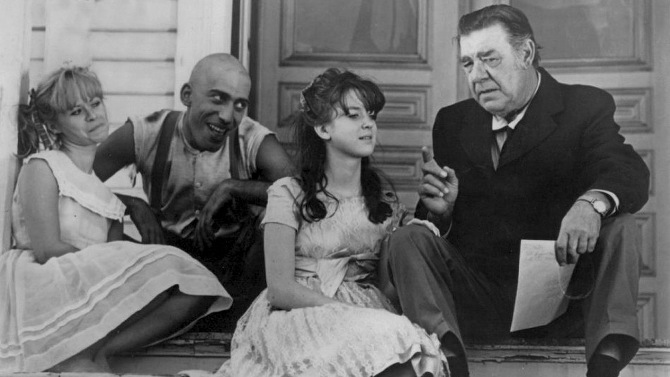
An Impossible Mission
How do you wrap up a franchise like Mission: Impossible? That is, if this even is the final installment... as they’ve made it sound (while at the same time, stars not named ‘Tom Cruise’ pipe up and suggest that might not be so). It has been twenty-nine years, with different writers and visionary directors – from twisty Brian De Palma and the action hair stylings of John Woo, to the lens flares of J.J. Abrams and animation expert Brad Bird, it was only about ten years ago that the franchise decided to opt for The Usual Suspects scribe Christopher McQuarrie for the final four. To return to that opening question once more, you could end with a Sopranos’ style cliffhanger, simply make another entertaining movie like the many before – like Everybody Loves Raymond did it with its final episode, or try to tie everything up in a neat little bow by bringing everything together as the Daniel Craig era did with James Bond. Well, it is definitely more along the lines of the latter example, with some distinct differences.
-
Vigilante Justice USA/UK Style
 Dirty HarryGet CarterMay 6, 2016
Dirty HarryGet CarterMay 6, 2016Dirty Harry, starring the legendary Clint Eastwood, has to be one of the most iconic characters in film history. Eastwood truly brings the essence of Harry Callahan to life, delivering a gritty performance that captures the hero’s gruff, no nonsense ways and vigilante-style justice. In 1971, the same year Eastwood starred in Dirty Harry, Michael Caine was cast as the lead in a British motion picture called Get Carter, which carries many of the same themes.
-

A Southern Delicacy
Fried Green TomatoesMay 3, 2016Certain novels, and their respective films, capture the beautiful yet complicated nature of the American south. The Adventures of Tom Sawyer and To Kill a Mockingbird are two such examples. A third book that has been transformed into a motion picture that illustrates this intriguing subject is Jon Avnet’s 1991 movie Fried Green Tomatoes.
-

Join the Madness
Spider Baby or, The Maddest Story Ever ToldMay 1, 2016Though I consider myself well versed in most areas of film, I must say that I knew nothing about the horror cult classic Spider Baby or, The Maddest Story Ever Told, until I began researching for my interview with Beverly Washburn, who starred in this quirky motion picture that was filmed in 1964, though it was only released in 1967 (due to issues with finances and poor distribution).
-

Get Your CAPE On
April 29, 2016For the second year running, Cornwall’s Benson Centre hosted CAPE, the Cornwall and Area Pop Expo. Fantasy Realm’s Randy Sauvé and fiancee Carol Grant (founders of the event), once again ran the show (congratulations to the couple who married in a truly unique ceremony that took place on Saturday evening at CAPE). After a more than successful first year (with more than 3500 people attending the one day event), hopes were high for year two.
-
Star Pick with Jenny Lampa
 How Hours Mark the TimeThe HoursApril 26, 2016
How Hours Mark the TimeThe HoursApril 26, 2016Interweaving multiple stories can be a complicated thing to do. For every film that succeeds at structuring several tales into one powerful story, there are twice as many that fall flat. One movie that takes on this challenging task, tackling three separate narratives that take place in very different eras, is the 2002 dramatic motion picture The Hours. The film features several powerhouse performances from three superb actresses (Nicole Kidman, Meryl Streep and Julianne Moore), so it is perhaps not surprising that actress Jenny Lampa, who has earned rave reviews and has received a number of acting nominations for her performance in the Swedish thriller The Break-In, selected this as one of her favourite movies.
-

These Vagabond Shoes Are Longing to Stray
Sullivan's TravelsApril 22, 2016It is interesting to chart the history of how time affects the status of actors, directors and the like. Some stars, though long since passed, have lasted the test of time – their names still bandied about in common conversations and the current lexicon. When watching a thriller, we may quickly reference Alfred Hitchcock, or while enjoying the manoeuvres of a physical comic, our minds may harken immediately to Charlie Chaplin or Chris Farley. Yet, it is equally as intriguing to investigate how certain names that were once so prevalent in their own era have become unknown to the common viewer – where only true film afficionados know their reach and influence. This seems to be the case with the highly talented comedic filmmaker Preston Sturges.


